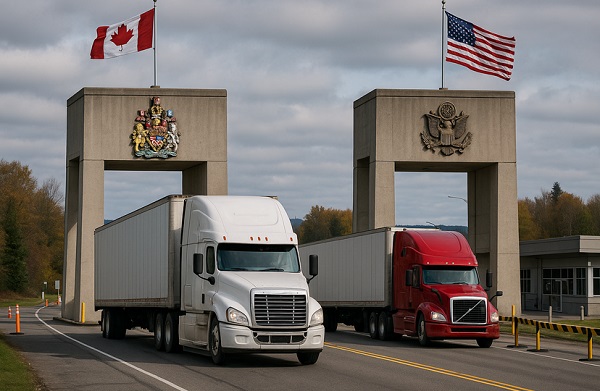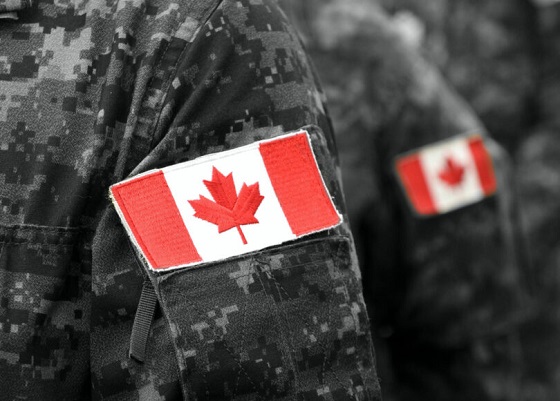Business
Tariffs Get The Blame But It’s Non-Tariff Barriers That Kill Free Trade

From the Frontier Centre for Public Policy
By Ian Madsen
From telecom ownership limits to convoluted regulations, these hidden obstacles drive up prices, choke innovation, and shield domestic industries from global competition. Canada ranks among the worst offenders. If Ottawa is serious about free trade, it’s time to tackle the red tape, not just the tariffs.
Governments claim to support free trade, but use hidden rules to shut out foreign competition
Tariffs levied by governments on imports are a well-known impediment to trade. They raise costs for consumers and businesses alike. But tariffs are no longer the main obstacle to the elusive goal of “free and fair trade.” A more significant—and often overlooked—threat comes from non-tariff barriers: the behind-the-scenes rules, subsidies and restrictions that quietly block competition from foreign exporters.
These barriers can take many forms, including import licences, quotas, discriminatory regulations and state subsidies. The result is often higher prices, limited product choices and reduced innovation, since foreign competitors are effectively shut out of the market before they can enter.
This hidden protectionism harms both consumers and Canadian firms that rely on imported goods or global supply chains.
To understand the global scope of these barriers, a recent analysis by the Tholos Foundation sheds light on their prevalence and impact. Its 2023 Non-Tariff Barriers Index Report examined the policies, laws and trade practices of 88 countries, representing 96 per cent of the world’s population and GDP.
The results are surprising: the United States, with some of the lowest official tariffs, ranked 65th on non-tariff barriers. Canada, by contrast, ranked fourth.
These barriers are often formalized and tracked under the term “non-tariff measures” by international organizations such as the United Nations Conference on Trade and Development (UNCTAD) and the World Trade Organization.
UNCTAD notes that while some serve legitimate non-trade objectives like public health or environmental protection, they still raise trade costs through procedural hurdles that can disproportionately affect small exporters or developing nations.
Other barriers include embargoes, import deposits, subsidies to favoured companies, state procurement preferences, technical standards designed to exclude foreign goods, restrictions on foreign investment, discriminatory taxes and forced technology transfers.
Many of these are detailed in a study by the Leibniz Institute for Economic Research at the University of Munich.
Sanctions and politically motivated trade restrictions also fall under this umbrella, complicating efforts to build reliable global trade networks.
Among the most opaque forms of trade distortion is currency manipulation. Countries like Japan have historically used ultra-low interest rates to stimulate growth, which also weakens their currencies.
Others may unintentionally devalue their currency through excessive, debt-financed spending. Regardless of motive, the effect is often the same: foreign goods become more expensive, and domestic exports become artificially competitive.
Canada is no stranger to non-tariff barriers. Labelling laws, technical standards and foreign ownership restrictions, particularly in telecommunications and digital media, are clear examples. Longstanding rules prevent foreign companies from owning Canadian telecom providers, limiting competition in an industry where Canadians already pay among the highest cellphone bills in the world. Similar restrictions on investment in broadcasting and interactive digital media also curtail innovation and investment.
Other nations use these barriers just as liberally. The U.S. has expanded its use of the “national security” exemption to justify restrictions in nearly any industry it sees as threatened. The European Union employs a wide range of non-tariff measures that affect sectors from agriculture to digital services. So while China is frequently criticized for abusing trade rules, it is far from the only offender.
If governments are serious about pursuing freer, fairer global trade, they must confront these less visible but more potent barriers. Tariffs may be declining, but protectionism is alive and well, just hidden behind layers of red tape.
For Canada to remain competitive and protect consumers, we must look beyond tariffs and scrutinize the subtler ways the federal government is restricting trade.
Ian Madsen is a senior policy analyst at the Frontier Centre for Public Policy.
Alberta
Falling resource revenue fuels Alberta government’s red ink

From the Fraser Institute
By Tegan Hill
According to this week’s fiscal update, amid falling oil prices, the Alberta government will run a projected $6.4 billion budget deficit in 2025/26—higher than the $5.2 billion deficit projected earlier this year and a massive swing from the $8.3 billion surplus recorded in 2024/25.
Overall, that’s a $14.8 billion deterioration in Alberta’s budgetary balance year over year. Resource revenue, including oil and gas royalties, comprises 44.5 per cent of that decline, falling by a projected $6.6 billion.
Albertans shouldn’t be surprised—the good times never last forever. It’s all part of the boom-and-bust cycle where the Alberta government enjoys budget surpluses when resource revenue is high, but inevitably falls back into deficits when resource revenue declines. Indeed, if resource revenue was at the same level as last year, Alberta’s budget would be balanced.
Instead, the Alberta government will return to a period of debt accumulation with projected net debt (total debt minus financial assets) reaching $42.0 billion this fiscal year. That comes with real costs for Albertans in the form of high debt interest payments ($3.0 billion) and potentially higher taxes in the future. That’s why Albertans need a new path forward. The key? Saving during good times to prepare for the bad.
The Smith government has made some strides in this direction by saving a share of budget surpluses, recorded over the last few years, in the Heritage Fund (Alberta’s long-term savings fund). But long-term savings is different than a designated rainy-day account to deal with short-term volatility.
Here’s how it’d work. The provincial government should determine a stable amount of resource revenue to be included in the budget annually. Any resource revenue above that amount would be automatically deposited in the rainy-day account to be withdrawn to support the budget (i.e. maintain that stable amount) in years when resource revenue falls below that set amount.
It wouldn’t be Alberta’s first rainy-day account. Back in 2003, the province established the Alberta Sustainability Fund (ASF), which was intended to operate this way. Unfortunately, it was based in statutory law, which meant the Alberta government could unilaterally change the rules governing the fund. Consequently, by 2007 nearly all resource revenue was used for annual spending. The rainy-day account was eventually drained and eliminated entirely in 2013. This time, the government should make the fund’s rules constitutional, which would make them much more difficult to change or ignore in the future.
According to this week’s fiscal update, the Alberta government’s resource revenue rollercoaster has turned from boom to bust. A rainy-day account would improve predictability and stability in the future by mitigating the impact of volatile resource revenue on the budget.
Business
Higher carbon taxes in pipeline MOU are a bad deal for taxpayers

The Canadian Taxpayers Federation is criticizing the Memorandum of Understanding between the federal and Alberta governments for including higher carbon taxes.
“Hidden carbon taxes will make it harder for Canadian businesses to compete and will push Canadian entrepreneurs to shift production south of the border,” said Franco Terrazzano, CTF Federal Director. “Politicians should not be forcing carbon taxes on Canadians with the hope that maybe one day we will get a major project built.
“Politicians should be scrapping all carbon taxes.”
The federal and Alberta governments released a memorandum of understanding. It includes an agreement that the industrial carbon tax “will ramp up to a minimum effective credit price of $130/tonne.”
“It means more than a six times increase in the industrial price on carbon,” Prime Minister Mark Carney said while speaking to the press today.
Carney previously said that by “changing the carbon tax … We are making the large companies pay for everybody.”
A Leger poll shows 70 per cent of Canadians believe businesses pass most or some of the cost of the industrial carbon tax on to consumers. Meanwhile, just nine per cent believe businesses pay most of the cost.
“It doesn’t matter what politicians label their carbon taxes, all carbon taxes make life more expensive and don’t work,” Terrazzano said. “Carbon taxes on refineries make gas more expensive, carbon taxes on utilities make home heating more expensive and carbon taxes on fertilizer plants increase costs for farmers and that makes groceries more expensive.
“The hidden carbon tax on business is the worst of all worlds: Higher prices and fewer Canadian jobs.”
-

 Alberta6 hours ago
Alberta6 hours agoFrom Underdog to Top Broodmare
-

 armed forces2 days ago
armed forces2 days ago2025 Federal Budget: Veterans Are Bleeding for This Budget
-

 Alberta1 day ago
Alberta1 day agoAlberta and Ottawa ink landmark energy agreement
-

 Artificial Intelligence2 days ago
Artificial Intelligence2 days agoTrump’s New AI Focused ‘Manhattan Project’ Adds Pressure To Grid
-

 International1 day ago
International1 day agoAfghan Ex–CIA Partner Accused in D.C. National Guard Ambush
-

 Carbon Tax1 day ago
Carbon Tax1 day agoCanadian energy policies undermine a century of North American integration
-

 International1 day ago
International1 day agoIdentities of wounded Guardsmen, each newly sworn in
-

 International2 days ago
International2 days agoTrump Admin Pulls Plug On Afghan Immigration Following National Guard Shooting







